Across cultures and throughout history, people have coveted gold, using the precious metal for jewellery, money and technology. How much do you know about gold mining and its star-spangled origins?
1. Meteorites delivered gold to earth
Scientists have shown that the Earth’s surface became enriched with precious metals by a ‘firestorm’ of meteorites that bombarded the earth’s surface 3.9 billion years ago. Next time you notice someone wearing gold, compliment them on their choice of extraterrestrial accessories!
2. Gold mining is one of the world’s most dangerous jobs
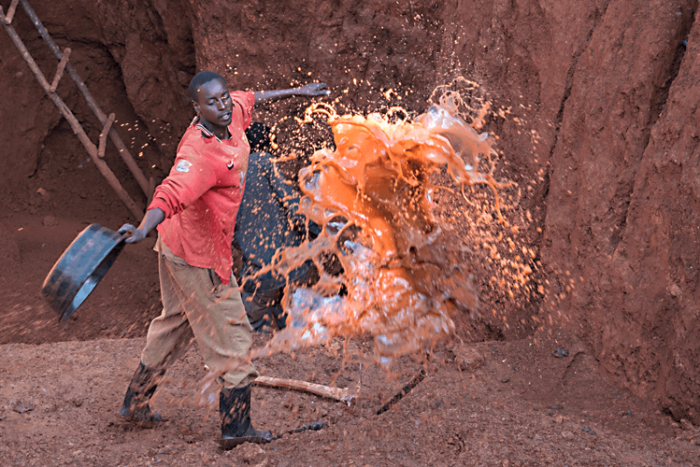
In non-Fairtrade small-scale gold mines, miners can work in dangerous conditions with little or no health and safety equipment. Accident rates are six or seven times higher than in large-scale mining.
Miners extract gold using toxic chemicals such as mercury and cyanide. The use of these chemicals can cause birth defects, brain and kidney damage, and can contaminate water supplies, entering the food chain through poisoned fish. They simply can’t afford to use safer processing methods.
3. Fairtrade tackles dangerous working conditions
We’re one of the most recognised standards globally for supporting improvements with artisanal and small-scale mines. Tackling unfair pay and dangerous working conditions, Fairtrade gold has strict requirements on health and safety, handling chemicals and environmental protection.
Workers in Fairtrade certified gold mines receive a guaranteed Minimum Price for their gold as well as an extra amount of money on top, called Fairtrade Premium, to spend on improving their businesses and community.
4. Your mobile phone contains gold
Did you know there is gold in your mobile phone? We’re also working with technology businesses to support them to source gold more responsibly.
Check out mobile phone company, Fairphone, who source Fairtrade Gold for their products.
5. 90% of gold miners are artisanal & small-scale
An estimated 100 million people worldwide rely on small-scale mining to support their families and communities. That’s the second largest sector in the world after agriculture. Fairtrade works exclusively with artisanal and small-scale miners.
Fairtrade is working with nearly 50 artisanal and small-scale miner sites in Peru, Kenya, Uganda and Tanzania.
6. Mining is one of the worst forms of child labour
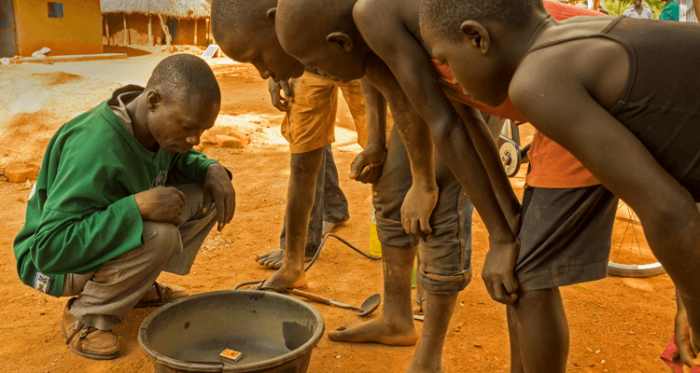
High levels of poverty in small-scale mining communities mean children are often forced to work to help increase their family income. The International Labour Organisation lists mining as one of the worst forms of child labour because it is dangerous and demanding.
Only mines that do not use child labour can be Fairtrade certified. Miners working in Fairtrade certified mines must put a Child Protection Policy in place and work to prevent child labour.
7. Global sales of gold are worth $140 billion per year
Global sales of gold are equal to 3,500 tonnes per year – that’s worth around $140 billion! Fairtrade Gold is the most precious commodity Fairtrade is working in and is worth $40,000 per kilo in the global market.
Fairtrade works to ensure that miners get a fair share of this value and an additional $2,000 per kilo as a premium payment. Miners can reinvest the Fairtrade Premium as they choose, whether that’s in their community, or to improve their business and work their way out of poverty, building better futures.
8. 60% of gold used annually comes from newly mined sources
The rest is from recycled supplies such as old jewellery that has been melted down. In conventional gold supply chains, newly mined and recycled gold is mixed when it is refined. This makes it impossible to tell the origin of metal in an item of jewellery or other gold product.
Fairtrade Gold can be traced from the mine through the refining process and into finished products. This is backed up by documentation of all transactions between miners and licensed jewellers. It means consumers and jewellers know that the gold in products carrying the Fairtrade Gold Stamp comes from a socially and environmentally responsible source which has economic benefits for miners.
9. Gold is likely produced by two neutron stars colliding
The sheer force of neutron star collisions is enough to force extra neutrons into the nuclei of atoms, forging heavy elements like gold and platinum. In 2017, scientists witnessed the collision of two neutron stars for the first time. What was only a theory on the origin of gold previously, became supported by gravitational waves and light being witnessed simultaneously.
10. Around half of gold mined is made into jewellery

Jewellery accounts for the single largest use of gold in the world today. Mined in dangerous conditions with devastating environmental impacts, jewellery is plagued with ethical concerns. Check out Fairtrade Gold pioneer Harriet Kelsall’s jewellery collection and make a positive difference through your purchase. Or take a look at beautiful engagement rings at CRED Jewellery. For something extra special and bespoke, visit Anna Loucah who handcrafts each of her unique pieces.
Other uses for gold include gold bars and coins, electronics and even dentistry!
This blog initially appeared on the Fairtrade Foundation website.
Angela Tatiana Vasquez Rojas has grown up in the small mining community of Santa Filomena since she was four years old. Her father worked in the Sotrami mines from dawn to dusk in order to earn enough to provide for his family and put bread on the table.
Although Angela has many fond memories of growing up in Santa Filomena, it was also a difficult and challenging upbringing. Working in the mines was one of the few jobs in the area and because of her father’s extensive hours he had very little time to spend with her growing up.
Angela spoke to us about the impact working as a miner had on her father.
“Being the daughter of a miner is a bit complicated because you do not get to spend much time with your father” she explains. “Mining wears them down a lot, they get sick and despite the fact that they extract gold they are not rich people as many believe. When they get sick sometimes there is not enough money for treatments. Sometimes there are accidents at work which one cannot survive, and you do not know if they will come out alive or dead.”
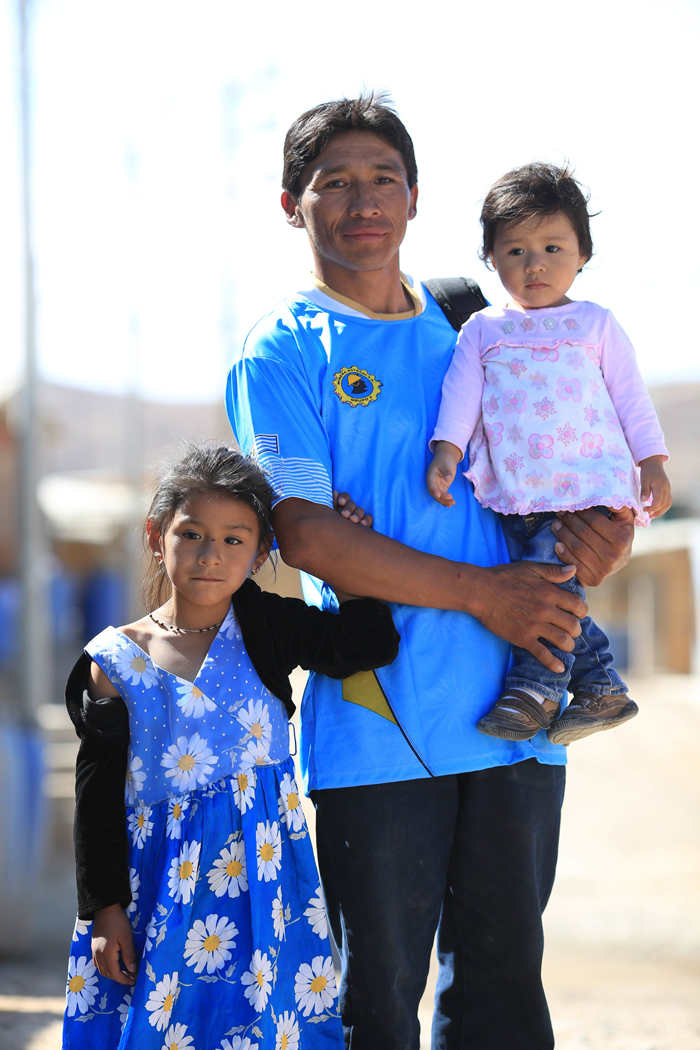
The fear for her father’s welfare is one Angela is very familiar with. Thanks to stricter regulations and help from Fairtrade, health and safety and working conditions in the mines have improved significantly over the years.
The organisation Sotrami came to the Atacama Desert mines near Santa Filomena in the 1980s. At that point the village was the home of many people who had been displaced by violence. The group started to work towards eliminating child labour and improving the conditions miners work in to reach international labour standards. The support of ethical jewellers such as Cred Jewellery have helped enable this change by providing demand for fairly sourced gold. Gradually over the years standards improved in the area, but it wasn’t until 2011 that the Fairtrade Minimum Price for Gold and Fairtrade Premium for Gold came into play, meaning that all workers now receive fair wages for their gold and money can be channelled back into the community.
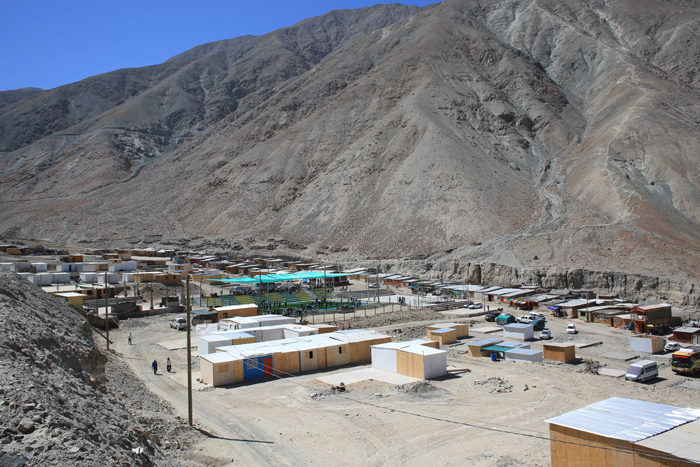
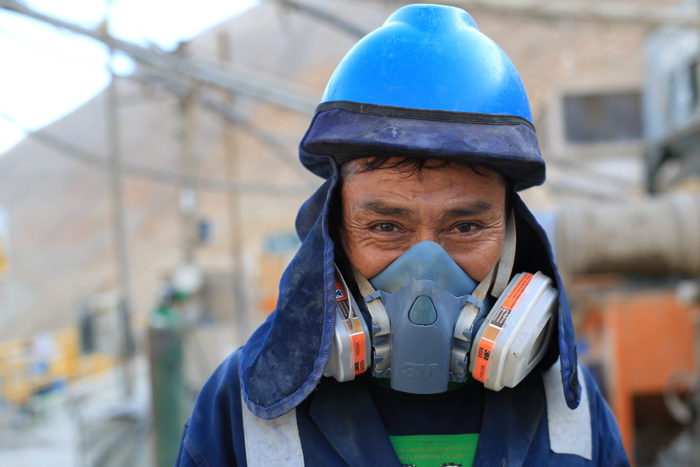
The Fairtrade Premium has completely changed the way that miners and residents of Santa Filomena live. The desert’s high temperatures meant a supply of clean and safe water was unreliable. Water was delivered in a weekly ration of barrels which sometimes arrived unpurified, causing mass sickness. Since their partnership with Fairtrade, the area has improved dramatically. With the Fairtrade Premium fund, the community has experienced a huge change in infrastructure; a new road was built which means water can now arrive by the lorry load, there is now electricity, internet and cable channels, and children have much better access to education and health services.
Angela’s generation is one that has started to reap the benefits of improved conditions, both in the local community and down the mines. She recalls her childhood fondly, acknowledging the hardships but also the positivity and dedication to change her father installed in her. Over the years, many people have worked in incredibly dangerous conditions in order to provide for their families. As things continue to improve, it is important to remember the history of the mines, the resilience of those who worked in them and how improvement affects not only the local community, but is also a reflection on the world as a whole and the growing movement towards ethical and sustainable practices.
“My father, despite the little time he has, has always taught me that one has to move forward and that despite the adversities one must never give up” says Angela. “I can say I had the kind of childhood and adolescence that few can enjoy. Being the daughter of a miner, despite the difficult times, means I grew up knowing that a hero does not always have super powers, but in exchange of that, heroes give their lives for their families.”
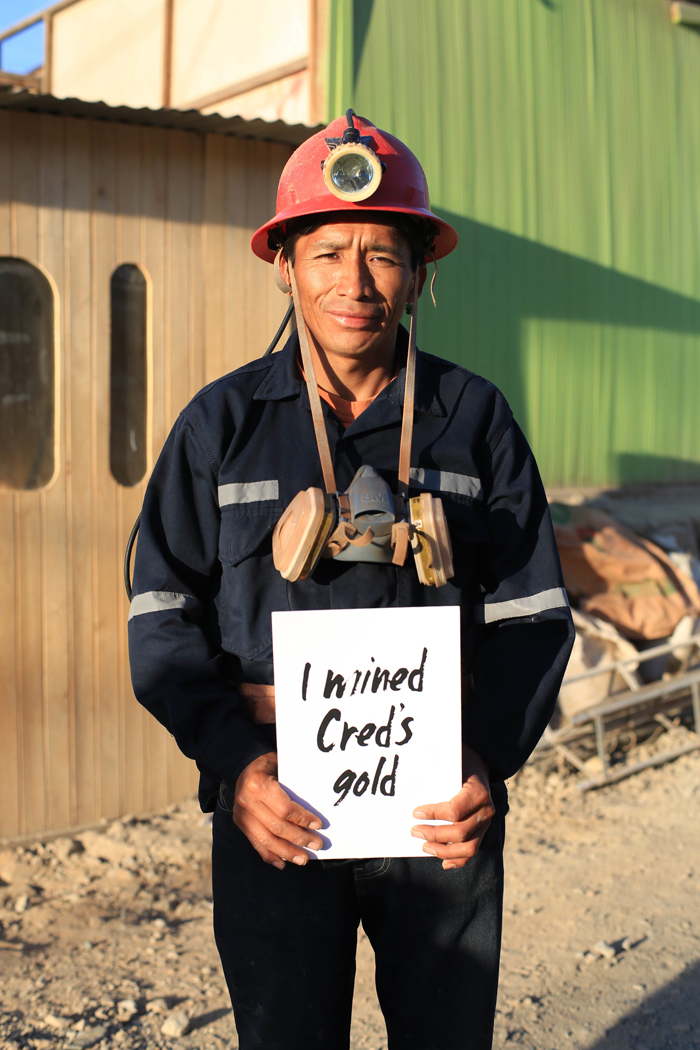
Angela is currently working in a village shop in Santa Filomena studying for her University entrance exam. Competition for grants from low income families in the area is fierce, so despite being a top student it is unlikely Angela will have the opportunity to attend university. Cred is dedicated to supporting mining communities and improving prospects for young people. Cred funded Angela’s trip to the UK to give her the chance to experience life in another country and to spread the message of how the Fairtrade Premium benefits so many. This in turn will help raise awareness, so more people will choose Fairtrade which in turn will help university to be more than just a pipe dream for young people like Angela.
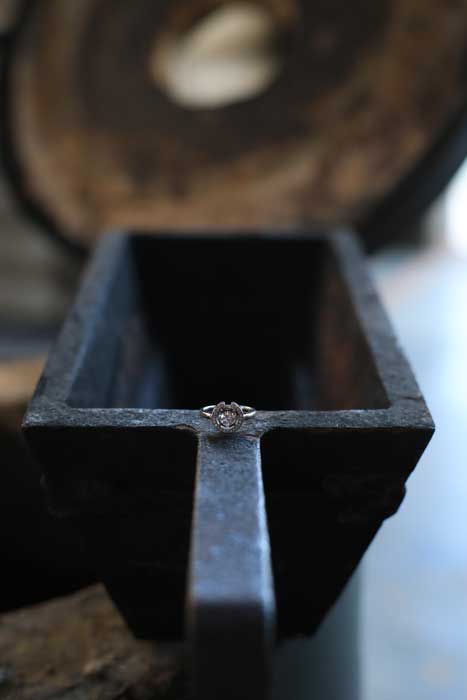
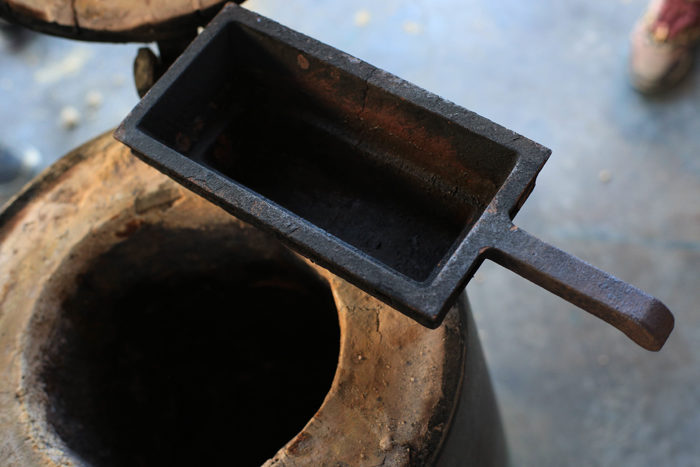
Meet Susi Smither, Founder and Goldsmith behind award-winning ethical jewellery brand The Rock Hound.
Selected as part of the prized line-up of just nine ethical and sustainable jewellery brands curated by La Maison Couture for their jewellery pop-up in collaboration with Selfridges Project Earth. Showcased in the Luxury Accessories Hall through to 1st May.
Proud Fairtrade Gold Licensee since 2014, Susi will be in store all day on Thursday 21st April to answer any questions you may have about traceable gold and why it is more important than ever in today’s world.
If you’re a conscious consumer, now is the time to ask – Where does my gold come from?
People sometimes ask me why I choose to work in Fairtrade gold and I always respond ‘Why wouldn’t I?’ I think that if there is an opportunity to make a positive difference then you’ve got to take it
Jewellery as an art form is so closely linked with the human experience, having been used throughout history to convey sentiment, love, wealth and power – and as my work is so directly inspired by this historical legacy it would almost seem disrespectful to use my materials callously.

There has always been a great deal of human exploitation and suffering inflicted in the quest for the creation of ‘beauty’. Unfairness may have been accepted, or ignored in the past, but now that we live in a world where knowledge is power and information is so accessible, we have a duty to exercise our freedom of choice and make positive changes where we can – it’s about being a part of the solution and not a part of the problem.
There is a tremendous sense of camaraderie in being part of the Fairtrade movement. We support each other and share information constantly I find it hugely inspiring to know that individual creativity can affect positive change and that collectively as jewellers, our voices can be heard.
The actual process of registering to become a Fairtrade gold licensee is more straightforward than you might think. There are numerous refining companies now registered, all offering an ever-increasing number of Fairtrade products and components and the recent launch of the Goldsmiths Registration Scheme has made it even easier to get involved no matter what your production capacity.
Another advantage of registering as a gold licensee is the immediate recognition that the Fairtrade mark carries. It’s a trusted and understood logo that people immediately feel comfortable with. This is of tremendous benefit when trying to communicate a system of provenance to clients – they just get it straight away!
Often the only reassurance I need give is that the gold is of exactly the same quality as non Fairtrade– the only difference is that there is a stamp that goes next to the hallmark proving that the origin of the metal and the circumstances under which it was mined are known.
That being said, there is still a long way to go before gold carries the same amount of consumer awareness as other Fairtrade products do. I am seeing an increase in the amount of customers coming to me requesting Fairtrade metal but it’s still a relatively small amount. So I’m very excited that Fashion Revolution has now welcomed jewellers into their campaign encouraging us to ask not only ‘Who made my clothes?’ but also ‘Who made my jewellery?’
However much we know about history, it still strikes a visceral blow to think how previous generations actually lived with the acceptance of the transatlantic slave trade as a normal part of life. I was recently asked what it is that we live alongside now that will astound future generations. This is a good question to ponder as we mark in 2015 the European Year of Development, celebrating the commitment of people across the EU to play their part in tackling global poverty. For myself, I know the answer immediately: the conditions endured by those 15 million people who depend on small-scale and artisanal gold mining for their livelihoods.
Never in all my many years (and I am getting old) campaigning against injustice in global trade, have I felt such raw shock as when I met people in Tanzania mining and processing gold, that iconic symbol of power and wealth. Millions of artisanal and small-scale miners face daily hazards. Most national mining laws and regulations are geared towards large-scale industry, so these leave them unprotected. They earn so little that they can only meet their most basic needs, with no money left to invest in making the mines safe. This leaves them exposed to severe dangers, particularly as a result of daily contact with toxic chemicals, such as mercury, cyanide and nitric acid which can damage the brain and the nervous system, cause vomiting, gastroenteritis, kidney complaints and muscular tremors.
Searing poverty brings its own dangers. One East African miner told us how after she gave birth, she didn’t go to work in order to look after her baby. Soon food ran out. She had some gold ore and, as her husband was no longer around, she asked her 15 year old son to help. He had grown up around mining and he knew how to process the rocks and sell the gold so they could eat. He crushed the rocks by hand, put them through the mill to turn them into fine powder which he sluiced, mixing the heavier particles containing gold with mercury using his bare hands. This left him with a small ball of gold ‘amalgam’ – a gold and mercury mix – ready to sell. As he stood up, the ball of gold fell out of his hand and into the water reservoir next to the pit. In a panic he jumped in, forgetting he couldn’t swim. He drowned in front of his little brother.
Artisanal and small-scale mining is highly labour intensive, with low capital investment. These miners account for 10% of the world’s gold supply but 90% of the workforce in gold extraction. Fairtrade’s new report published on 14th January outlines how these miners are at the sharp end of a long, complex supply chain over which they have little control. Tracing gold is notoriously difficult and the gold industry has been slow to open its doors to scrutiny. This has made it virtually impossible for consumers to know under what conditions the gold in their jewellery was mined. That’s why we launched Fairtrade gold – to start the long, slow process of highlighting the problem and creating change. For the past four years we have been working with miners, chiefly in Peru Bolivia and Colombia. These groups have proved that, with training and investment, they can meet the strict standards needed to improve their working conditions and manage toxic chemicals. Their organisations receive a Fairtrade premium of $2,000 per kilo on top of the guaranteed minimum price they are paid for their gold, which goes towards improving their businesses or into community projects. There’s also an extra premium for those few groups who have managed to process gold without mercury or cyanide in recognition of the extra costs involved. We’ve been constantly refining how Fairtrade works in the gold sector. Next month we publish revised Fairtrade Standards, more closely aligned with international regulations around sourcing minerals from regions involved in conflict, in particular the OECD Guidance on Responsible Sourcing of Minerals from Conflict-Affected Areas. New EU rules, still being drafted, are likely to be voluntary, non-binding requirements for European companies that import so-called ‘conflict minerals’ (gold but also tin, tungsten and tantalum) to conduct enhanced due diligences on their supply chains and publicly report on their findings – modelled on the USA’s famous Dodd-Frank Act, but without that compulsory bite. It seems likely, therefore, that any European company working with Fairtrade will already be meeting the expectations of the EU rules with regards to due diligence checks and third-party reporting. Companies have the capacity to adapt to new requirements, but what’s vital is that any need for mining groups to change is accompanied by investment to help them to take those steps towards improvement. A grant from Comic Relief has enabled Fairtrade to work in East Africa for the past three years. This has enabled small-scale miners to get organised, register as legal operations, and improve their basic conditions.
Simon Odoyo from Lolgorian, a group working towards Fairtrade certification in Kenya, said: “When we learnt about Fairtrade we developed new methods. We have a group of registered members, we have a valid registration certificate, and a valid prospecting right. We now know how to make and keep our daily records, make the environment clean inside the pit and use safety gear including gloves and gumboots.” Dan Odiba from Micodepro in Kenya, added: “ Previously each and every miner worked on his own. Today we are privileged to do it collectively. We mine as a group; we process our ore together as a group; and we sell the same as a group.” Fairtrade is under no illusions as to the challenge we are taking on. Each small achievement in such a tough environment is its own triumph, and rightly celebrated by the miners. But we know supporting them to achieve real transformational change in an industry plagued with injustice and abuse is a long, hard journey. Fairtrade is here for the long haul. Ultimately, miners need traders willing to pay the extra costs. These are, in fact, no more than the true costs of mining. That is why we strongly encourage companies to buy as directly as possible from mining groups, paying those higher prices and accompanying them in the process of change.
This January, as the Year of Development gets underway, we have launched a campaign calling on people to buy Fairtrade gold, especially when they are getting married. Fairtrade has galvanised the public across Europe to create change in supermarket food aisles, stores and cafés: people understand that, by asking for Fairtrade and buying it, they are driving change cup of coffee by cup of coffee. Now we are bringing that same approach to the jewellery sector. So far, sales of Fairtrade gold are largest in the UK, with many cutting edge British jewellery designers such as Cred Jewellery, which has just announced a 44% increase in sales this Christmas or Ute Decker and Pippa Small. There are positive signs – the Fairtrade Foundation’s research shows that consumers believe buying jewellery for a special occasion would hold greater value and significance if it carried the FAIRTRADE Mark. Fairtrade gold is also available in many other countries, notably Switzerland (where most of the world’s gold is refined), and Luxembourg, where last year the Bank of Luxembourg issued special Fairtrade gold coins celebrating the country’s 175 years of independence. We need businesses to follow this lead. The more that do, the greater our hope of one day consigning these shocking, scandalous working conditions to history.
Általunk is sokszor hangoztatott tény: a ruhaipar káros a környezetre és az emberekre egyaránt, de az iskoláknak nagy szerepe lehet abban, hogy a változást elősegítsék. Az alábbiakban brit példák mentén mutatjuk be a divatfókuszú környezeti nevelés néhány kiemelkedő kezdeményezését.
Te tudod, hogy mennyibe került a ruhád valójában? Jó eséllyel jóval többe, mint gondolnád. A ruhaipar az egyik legkörnyezetszennyezőbb iparág, az összetett gyártási technikák és ellátási láncok pedig környezeti problémák ezreit hozzák magukkal. A változás szükségessége nem tűr halasztást – és az oktatás kulcsfontosságú szerepet tölthet be abban, hogy a ruháinkhoz fűződő magatartásunk új irányokba terelődjön. Néhány iskola már most együttműködik szervezetekkel, hogy közösen tárják fel a divatipar hatásait.
„A divatipar üzleti modellje a mennyiségre épült és arra, hogy a gyártási folyamat a lehető legolcsóbb és leggyorsabb legyen – vásárolj olcsón, viseld néhányszor és dobd is el! Ez nem egy fenntartható modell a környezet számára.” – mondja Sarah lymkiw, a Traid, egy olyan Egyesült Királyság-beli alapítvány oktatási vezetője, mely a ruhaipari hulladék környezeti és társadalmi hatásainak csökkentéséért küzd.
A ruhák életciklusa
A Traid általános iskolai és középiskolai szinteken tart programokat. Évente nagyjából 10.000 tanulót érnek el és interaktív, mélyreható workshopokat tartanak olyan témakörökben, mint például a ruhák életciklusa, upcycling és ruhajavítás, az idősebb tanulóknak állampolgársági, földrajzi és technológiai workshopokkal kiegészítve.
„Először is szeretnénk elmélyíteni a tanulók tudását, majd arra ösztönözni őket, hogy kritikusan gondolkozzanak arról, hogy mely résztvevők a felelősek a divatipar környezeti és társadalmi hatásaiért – és arról, hogy mit lehet tenni ez ellen.” – mondja Klymkiw. A honlapjukon megtalálhatók ingyenesen letölthető tananyagok a tanárok számára, melyek tartalmaznak oktatási terveket és prezentációkat, amiket a tanórákon használhatnak. A Traidfilms Youtube-csatornáján pedig további hasznos videók érhetők el.
Aurora Thompson Londonban, a Haggerston Schoolban tanít designt és technológiát. Az iskola dolgozott a Traiddel egy fenntartható divat programon, ami kifejezetten illeszkedik Thompson fő tantárgyához: „A design és technológia minden munkafolyamatába beágyazódtak a fenntarthatósággal kapcsolatos problémák, mint például az újrahasznosított alapanyagok használata, a textilipart átszövő, összetett problémák megértése, valamint a termékek életciklusa.”
A Haggerston School programjai két korcsoportot céloztak meg: a tizedikesek upcycling workshopokon vettek részt, míg a tizenegyedikesek előadásokat hallgattak meg. Thompson így folytatja: „A workshop csapatmunkában zajlott és fejlesztette a diákok együttműködését, míg az előadások megszilárdították a tizenegyedikesek tudását a fenntarthatósággal kapcsolatban.”

Néhány diák számára a kurzus inspiráló volt: „Egy újfajta megközelítést ismerhettek meg a saját fogyasztásukkal kapcsolatban is. Néhány diák az osztályból ennek eredményeképp önként jelentkezett, hogy segítsenek megszervezni egy Fairtrade hetet az iskolában.”
Carol Fitzwilliamet, aki designt, technológiát, művészeti és textilművészeti tantárgyakat oktat a Queens Park Community Schoolban, a Traiddel való első találkozás rögtön arra inspirálta, hogy létrehozzon egy fenntartható divatprogramot az iskolában: „A kilencedikesekkel azon dolgoztunk, hogy mi mindent tudnak létrehozni régi pólókból. Csapatokban dolgoztak és eltérő sikerrel gondolták újra a ruhadarabokat. A projekt nagyon jól működött, mert egy-egy általuk már nem viselt ruhának adott egyedi, új lehetőségeket. Ezután kétszer is elgondolkoztak az olcsó ruhákról, amiket vásárolni szerettek volna.”
A Fashion Revolution programjai, kollaborációi az oktatás terén
A Fashion Revolution központja válogatott oktatási anyagokat tesz elérhetővé a honlapján keresztül, oktatási tevékenységükbe pedig beletartozik a 2015-ös Fashion Revolution Arts and Speaker Tour is, ami főiskolákat látogatott meg, hogy felhívja a figyelmet a divatipar problémáira. Azóta is rendszeres előadásokat és kiállításokat szerveznek az Egyesült Királyság különböző főiskoláin.
„Az új generációk formálásához a legtöbb iskola és egyetem kezdi elengedhetetlennek látni a fenntarthatóság oktatását, és nem csak a divat területén,”- mondja Orsola de Castro, alapító és kreatív igazgató. „Ami azt illeti, a divat területén talán még el is vagyunk maradva.”
A szervezet olyan esettanulmányokat használ fel, mint az, amelyik egy farmernadrág életciklusának a hatásait részletezi. De Castro szerint ez bemutatja „a teljes társadalmi és környezeti hatásokat, a gyapottermesztéstől a festésen át, a gyártási folyamatokig.”
A divatipar társadalmi hatásai – mint az általános jólét, foglalkoztatás és egyenlőség – szintén fontos részei a tanórai párbeszédeknek. A Clean Clothes Campaign beszámolója szerint, a textilipar 75 millió embert foglalkoztat. Ezeknek a munkásoknak háromnegyede nő, és sokan alacsony fizetésért, szabályozatlan körülmények között dolgoznak.
A Fashion Revolution Hungary és a Nemzeti Divat Liga Magyarország összefogásából született meg tavaly év végén a „Divatosan a környezetért!” elnevezésű oktatási projekt, mely a 13-18 éves korosztályt célozza. Célja egy közösségi edukációs program elindítása, aktív részvétellel és az élmény alapú tanulás módszereivel. Interaktív, a fiataloknak megszólító platformok, eszközök, valamint ismert és elismert szakemberek, illetve kutatásaik bevonásával a divatipar környezetre gyakorolt hatását, az etikus foglalkoztatás rendszerét, az internet és a social media jelentőségét tárjuk fel jól érthető, könnyen feldolgozható formában. A program középiskolai és gimnáziumi, szakközépiskolai pedagógusoknak, továbbá a szülőknek is szól. A FRH és az NDL csapata jelenleg azon dolgozik, hogy támogatást gyűjtsön a projektre az Adjuk össze! felületén.
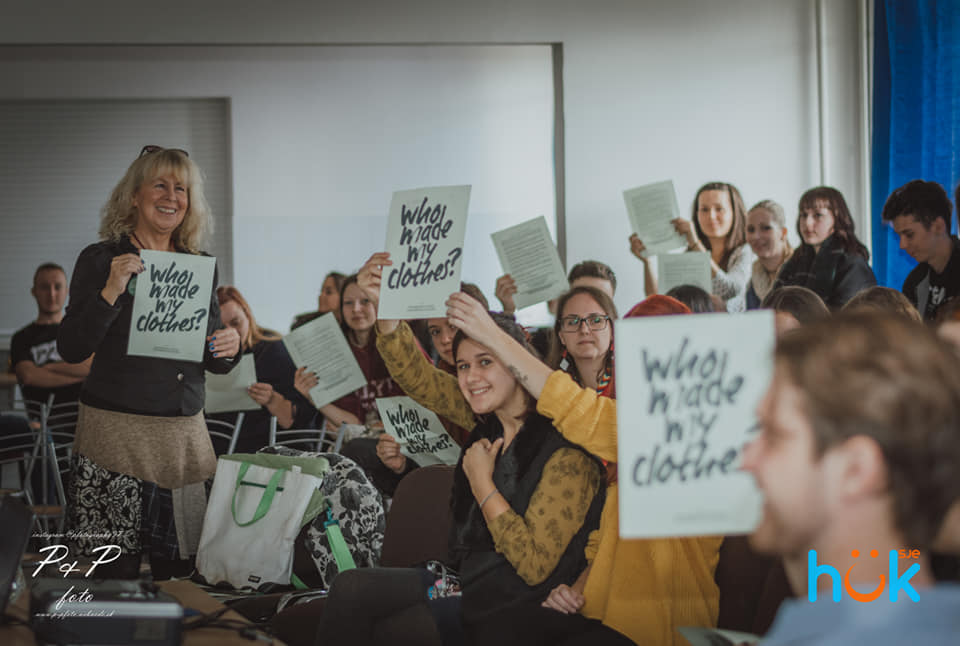
Egy Cambridge-i iskola, a Leys szintén együtt dolgozott a Fashion Revolutionnel az oktatási programjaikon. Andrew Harmsworth, a World AIMS (egy projekt, ami a tanulóknak segít többet megtudni az őket körülvevő világról) iskolai koordinátora kiemelte a gyakorlati hatásait annak, ha a divatról beszélgetnek a tanórákon. Azt mondja, hogy a párbeszédek „mély hatással voltak a diákokra, hiszen egy olyan dolgot tárt fel előttük, amiről legtöbbünknek csak ködös elképzelései vannak: miszerint amiket megvásárolunk, azokat távoli országokban élők készítették, és a döntéseink nagyban befolyásolhatják, hogy a vásárlásaink negatív hullámokat vetnek, vagy pozitív változást hoznak.”
Denz Fernandes oktató hozzáteszi: „Az elmúlt években részt vettünk közösségi média kampányokban a Fashion Revolution #WhoMadeMyClothes hashtagjével. A diákok és tanárok fotókat készítettek saját ruháik címkéivel. Ezek a képek végül eljutnak a ruhamárkákhoz és gyártókhoz.”
Vannak-e akadályai annak, hogy a fiataloknak új perspektívákat adjunk át a divatról? Az öltözködés az egyik módja annak, hogy a diákok elkezdjék meghatározni magukat, akár saját stílusukon vagy márkahűségükön keresztül.
Ám Fitzwilliam szerint, ha tanulnak a fast fashionről, az segíthet, hogy ezeket a szokásokat finomítsák, és elgondolkodtassák a fiatalokat: „A szokásos márkaközpontú gondolkodást félre kellett tenni. Szerintem a diákok elkezdték értékelni, hogy néha jó dolog egyedinek és különbözőnek lenni.”
Az ehhez hasonló projektek kiemelik, miért alapvető a divatiparról és annak hatásairól tanítani: kiindulópontot jelenthet a legfontosabb, szerteágazó problémakörökhöz, melyekkel ma szembe kell néznünk, miközben a diákok mindennapi életére vonatkoztatható, megfogható viszonyítási pontot adhat.
„Ez egy komoly probléma”- mondja de Castro. „De szerencsére, ha együtt cselekszünk, akkor felülkerekedhetünk azon a közömbösségen, hogy ezt a problémát megörököltük, és összpontosíthatunk arra, hogy aktív részesei legyünk a megoldásnak.”
Szerző: Burány Veronika, forrás: The Guardian, képek: Unsplash, Pék Pál
May 2019 Fair Fashion Lao and Fashion Revolution launched a Sustainable Fashion Weekend and Design Competition at Lao National Cultural Hall.
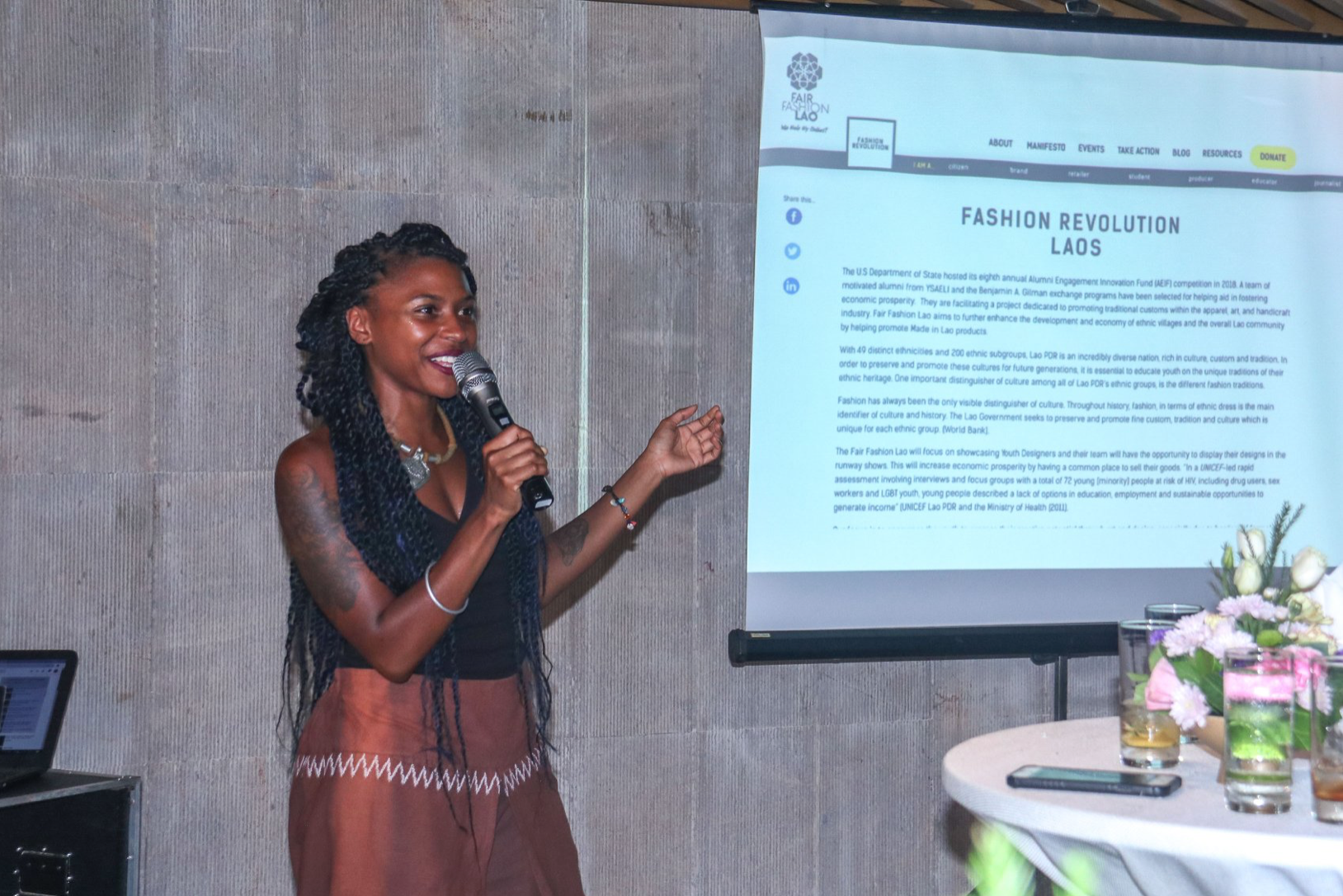
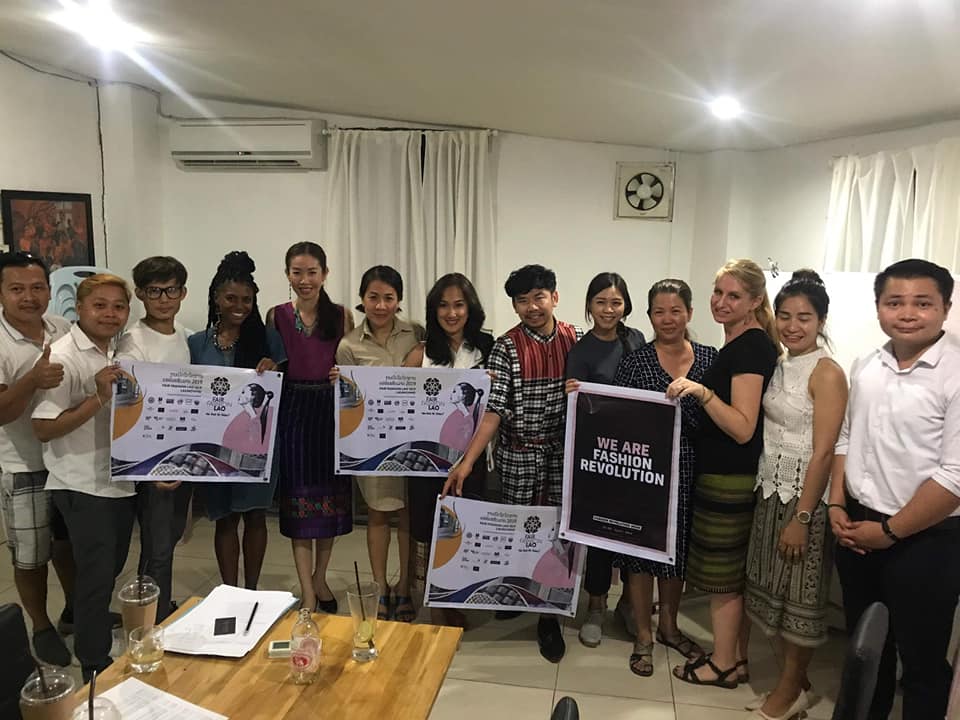
The 10 selected young designers each created two looks to be shown on the runway and in Phanphae (Fabric) Evolution Exhibit in Vientiane Center Shopping Center.
The design criteria included that garments should be:
- Sustainable
- Ethical
- Sellable
- Culturally unique
All pieces were created with “Made-in-Lao” fabric; and incorporated elements from the diverse culture of Lao within their designs. The designers had the wonderful opportunity to get hands-on experience to learn new design techniques, tour local merchant partner shops, visit the Lao Textile Museum, attend a natural-dye and leaf printing workshop and more.
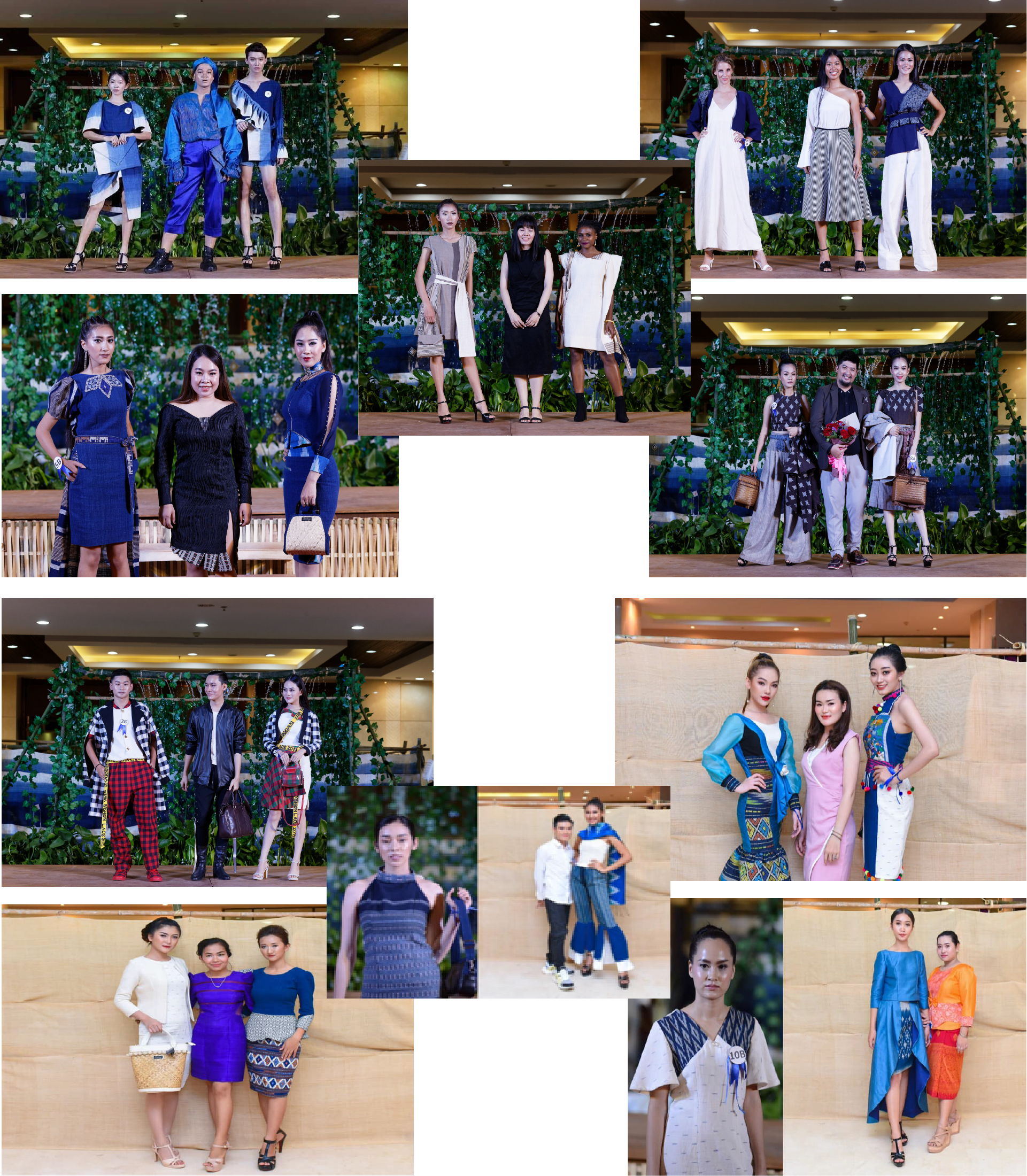
Our merchant partners stated that the local community believes their prices are too high, therefore the sustainability of their business is generated from expats and tourists. This means the possibility of having a significantly low-rate on repeat customers; causing instability in the profit generating model. While Fair Fashion Lao aims to encourage and promote Made-in-Lao products to the local and expat communities and international market. Special thanks to Khaoniew Theater Company for the bamboo style runway featuring a waterfall and pond for a naturalistic atmosphere.
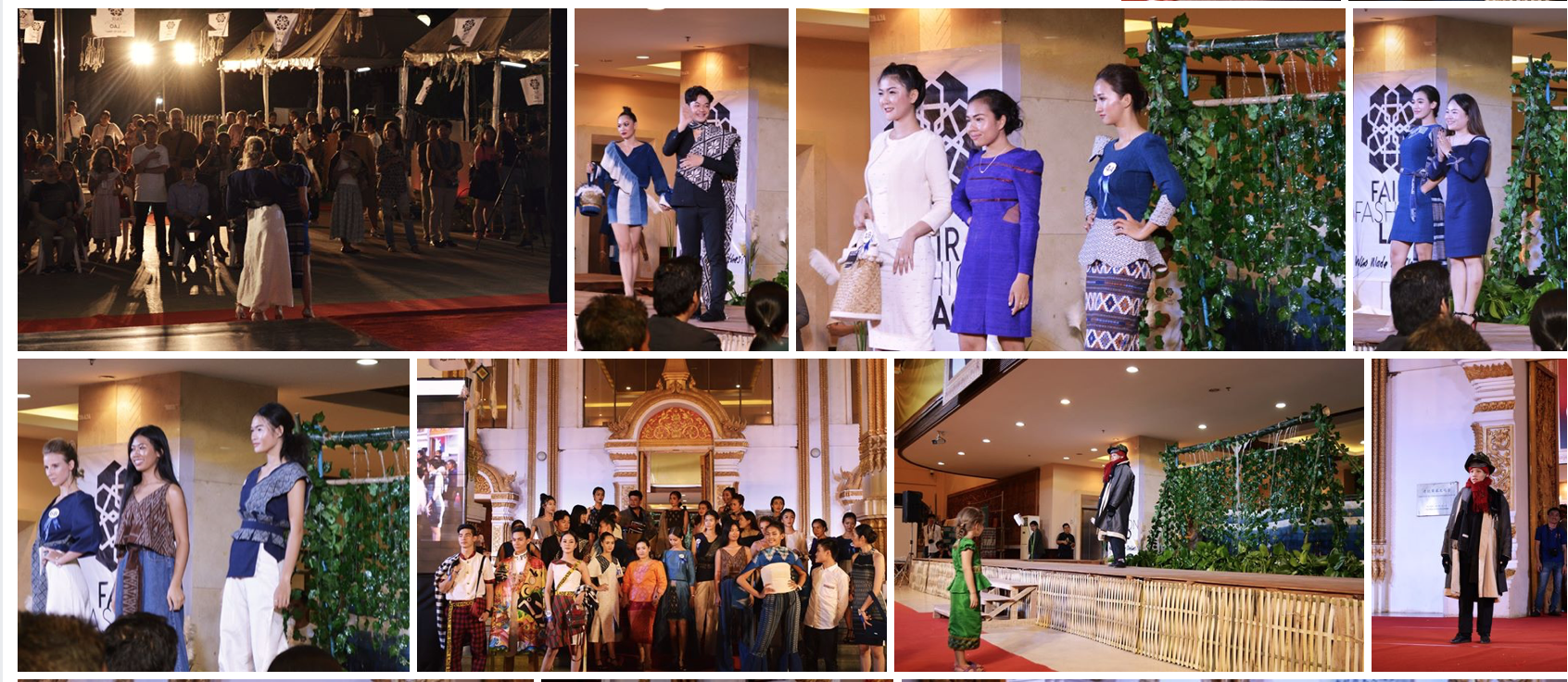
FFL aims to provide the youth with new opportunities for professional growth and hands-on experience in the emerging fashion industry. Our event provided over 40 youth individuals from universities and high schools to volunteer in event management, marketing, modeling, and design. It gave an opportunity for young designers to create designs and showcase it on the runway and in a fashion showroom.
The selected young designers stated “We modified Lao traditional fabrics into our own interpretation of modern designs. Our aim is to exhibit the development of normal and traditional fabrics into contemporary designs and various types of goods to enhance Laotian craftsmanship and our community.” – Phanphae Evolution Designers from Fair Fashion Lao Program.

The ten young selected designers competed for first place and People’s choice award. Our first place winner, Ms. Arlin Manithip, was selected for her two zero-waste design pieces made with all natural materials and plant-extracted dye sourced from ethnic village tribes through Saoban Fairtrade Social Enterprise. Multifunctional, ready-to-wear, fashionable, and innovative, her designs creates a new dynamic for the Sustainable Fashion Industry of Lao PDR.
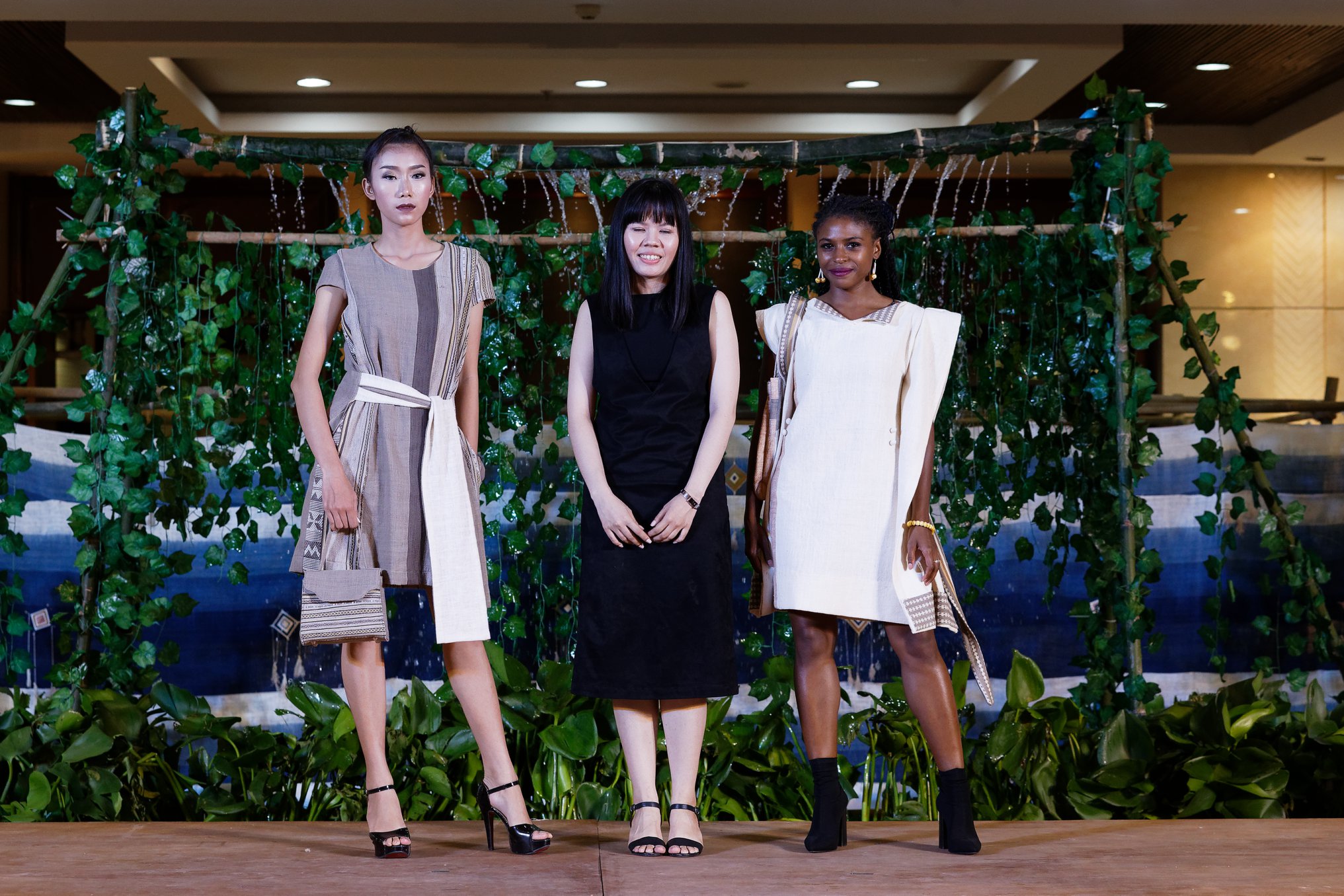
From up-cycling to zero waste to biodegradable the ten selected young designers and merchant partners are bringing in a new wave of “Made-in-Lao” sustainable, ethical, or innovative fashion products and accessories. There is indeed a movement for the emerging sustainable fashion industry in Lao PDR with more consumers asking “Who Made My Clothes” and an increase of designers and village artisans responding.

This fashionable weekend included:
- Pop up shops
- Runway shows
- Sustainable design competition
- Speeches from key industry and policy leaders
- Weaving demonstrations from village artisans
- Contemporary dance and puppetry performances
- Food and Drink
Merchant partners included; Saya, Boutsaya, Naree, Khampao, Khampoun, Golden Age Tam, Khang, Saoban, ODOP, Ock Pop Tok, Camacrafts, Veo Handbags, and MeuangXua Embroidery.
Selected Event Photos Below:
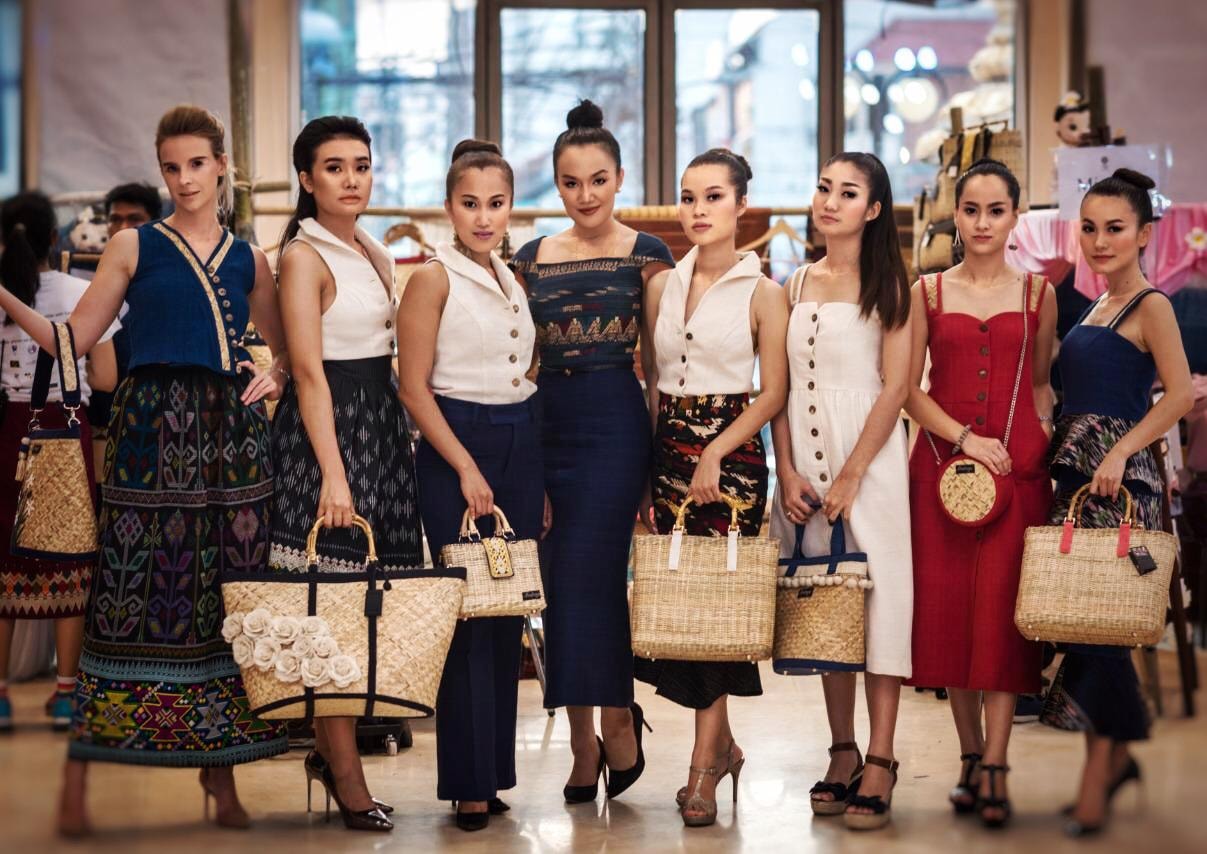

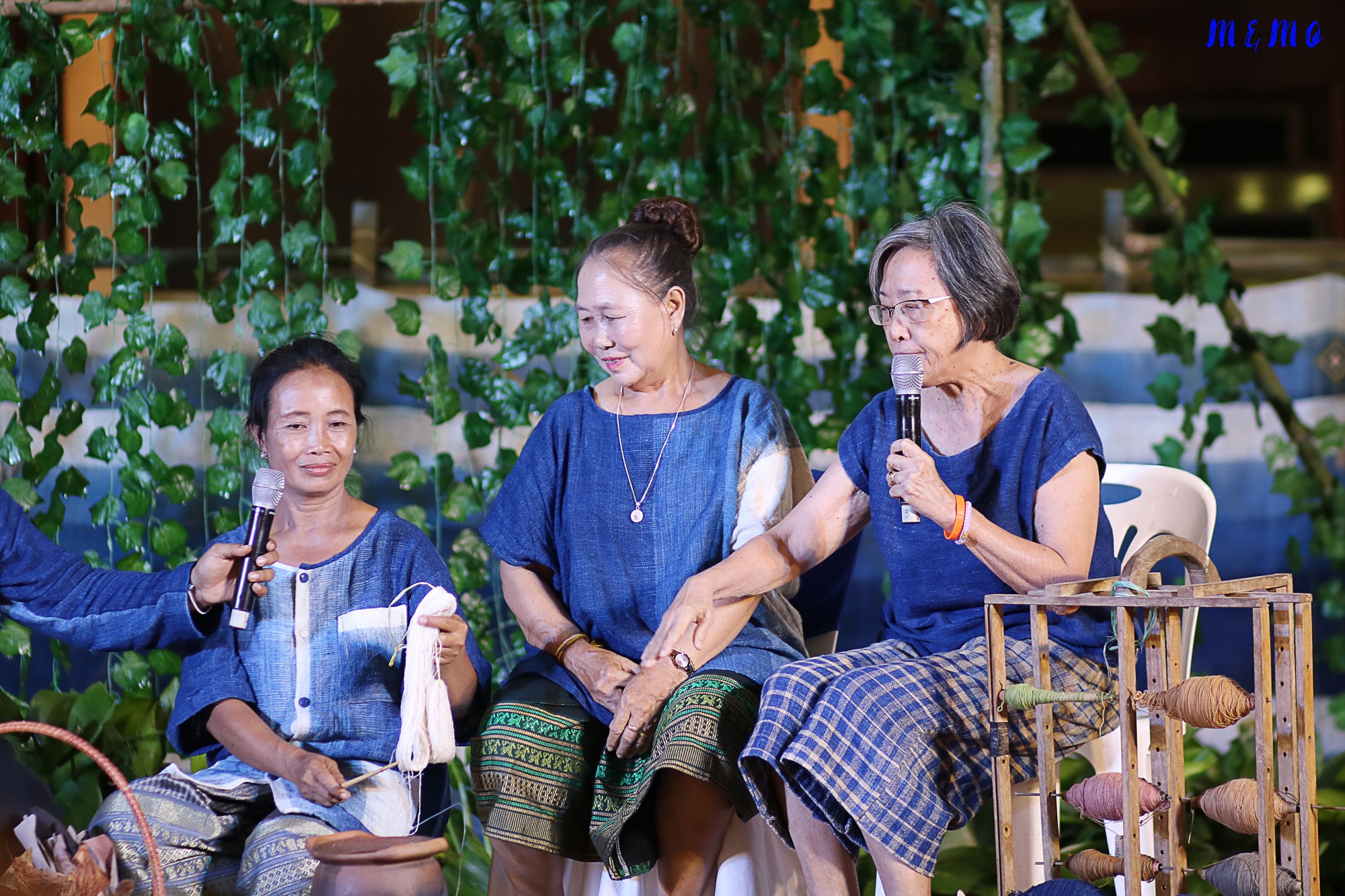
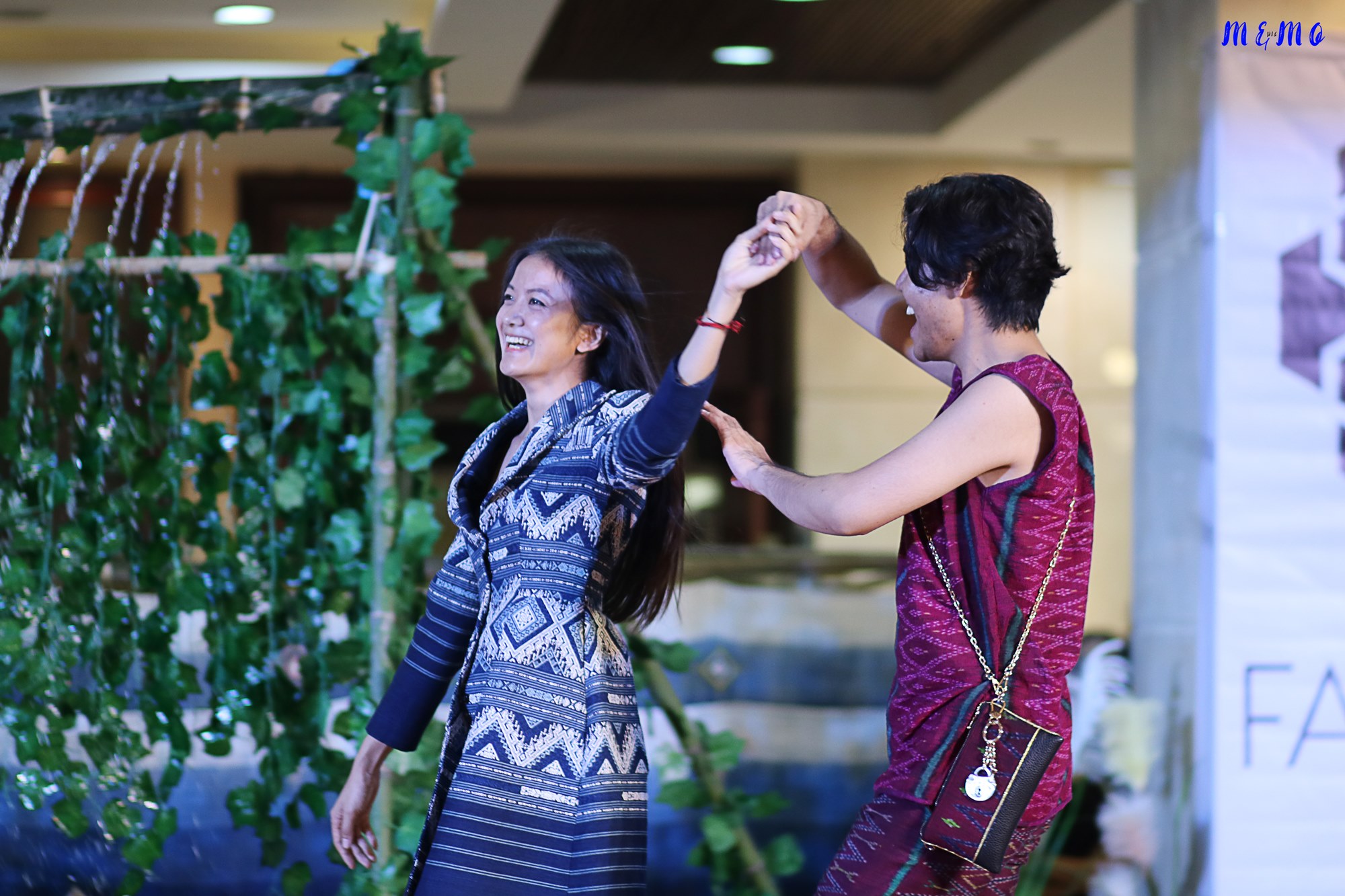
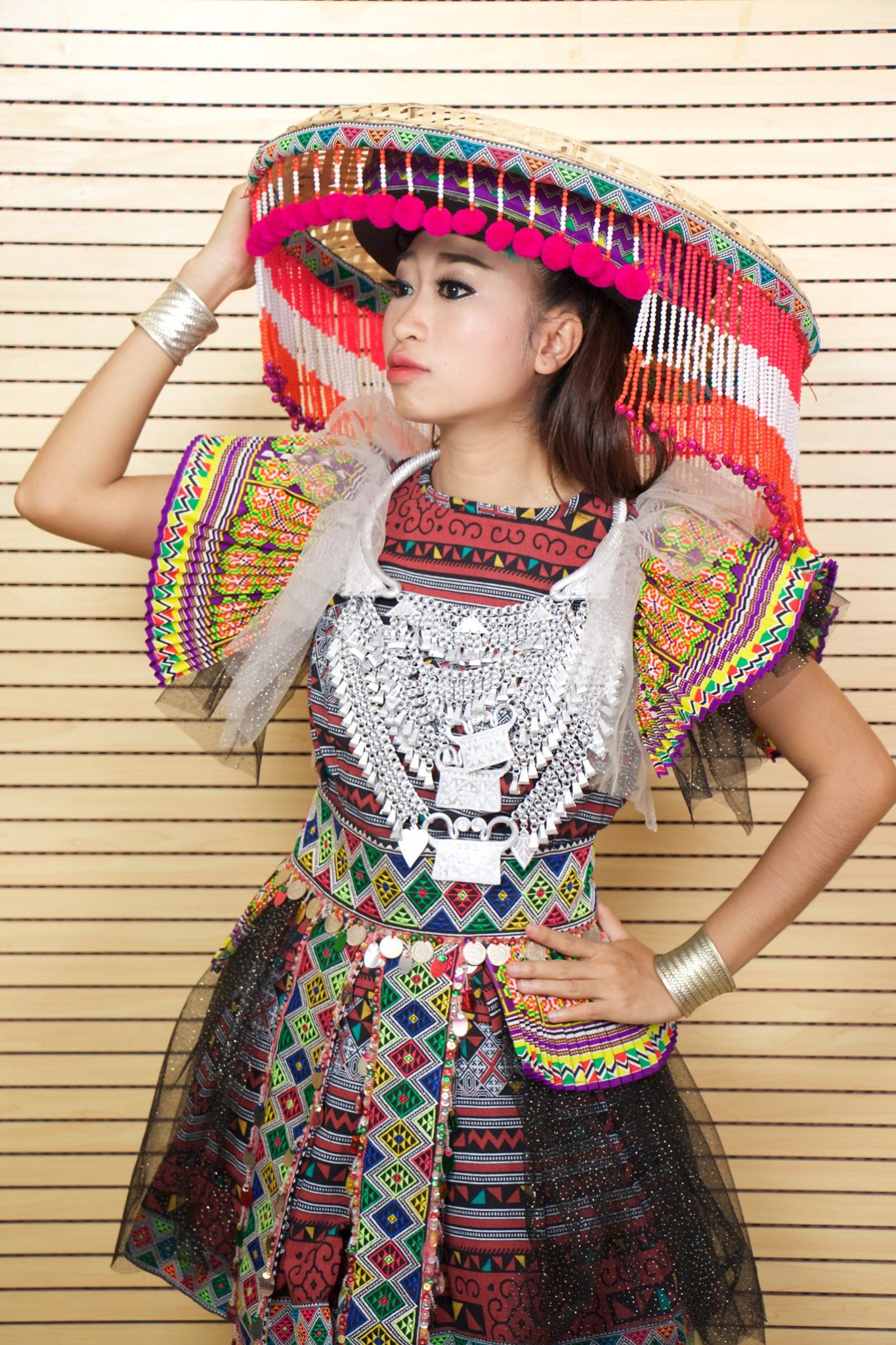
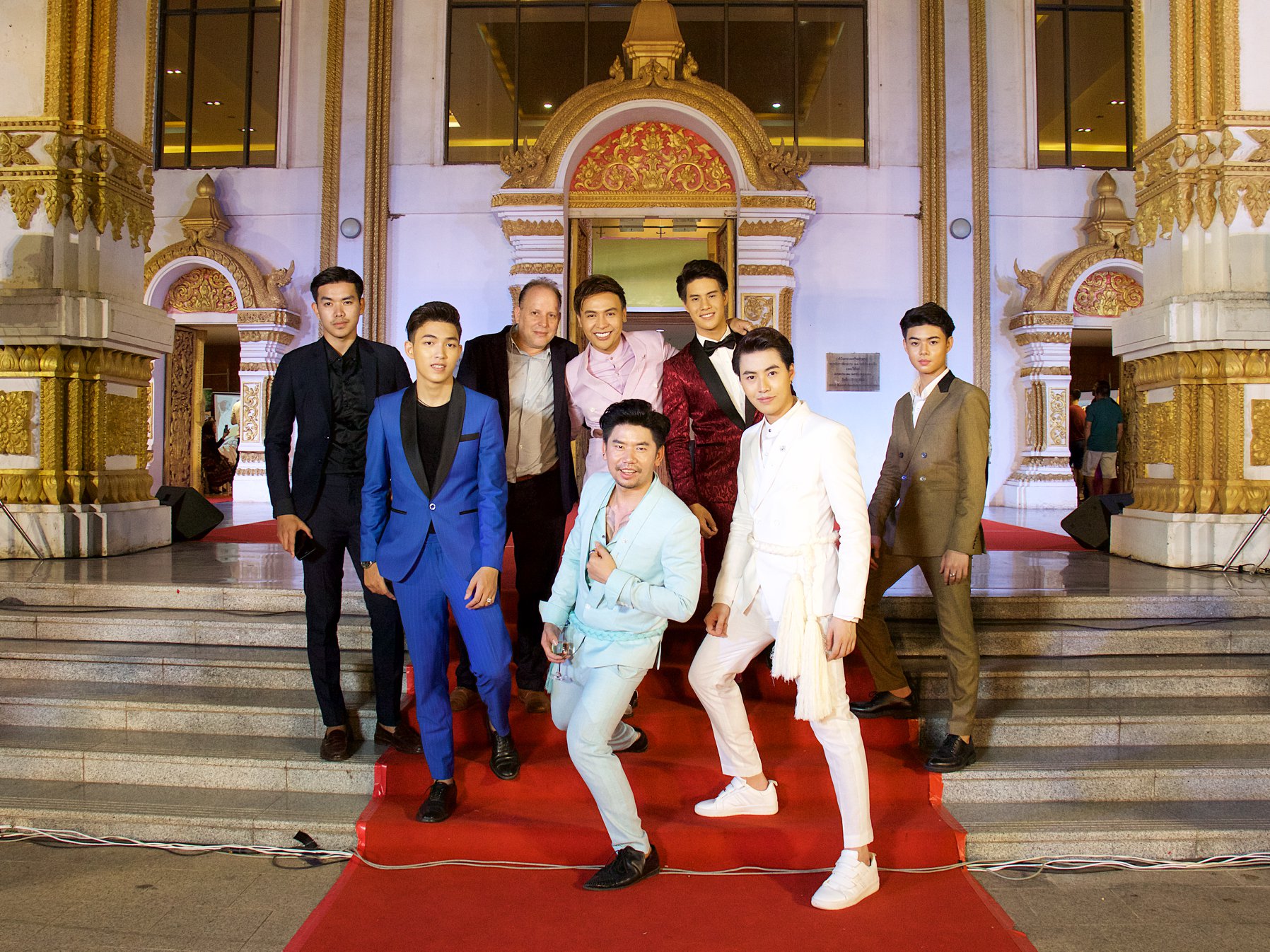
Full Press Release for project on Fashion Revolution Laos homepage
Follow Fair Fashion Lao on Facebook here:








